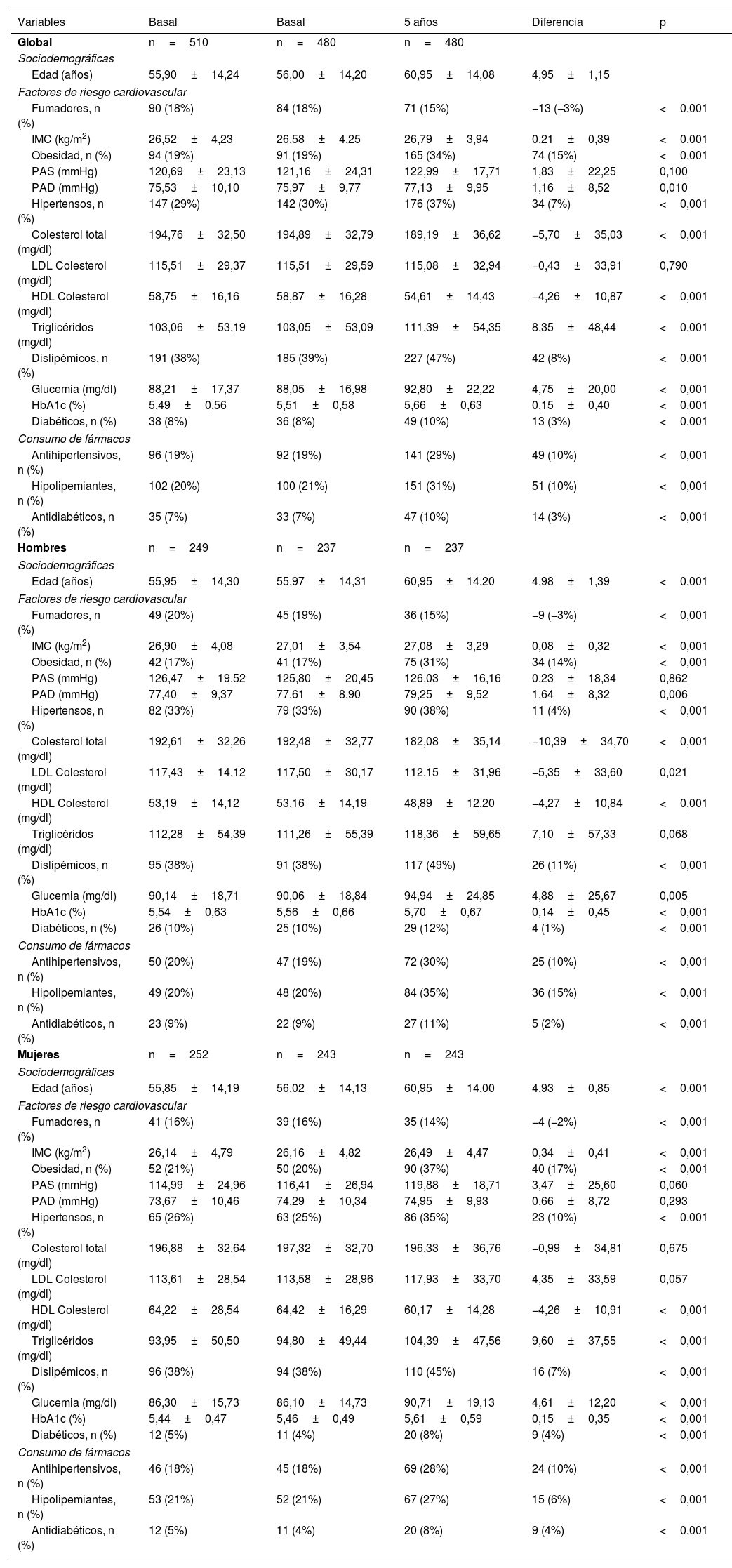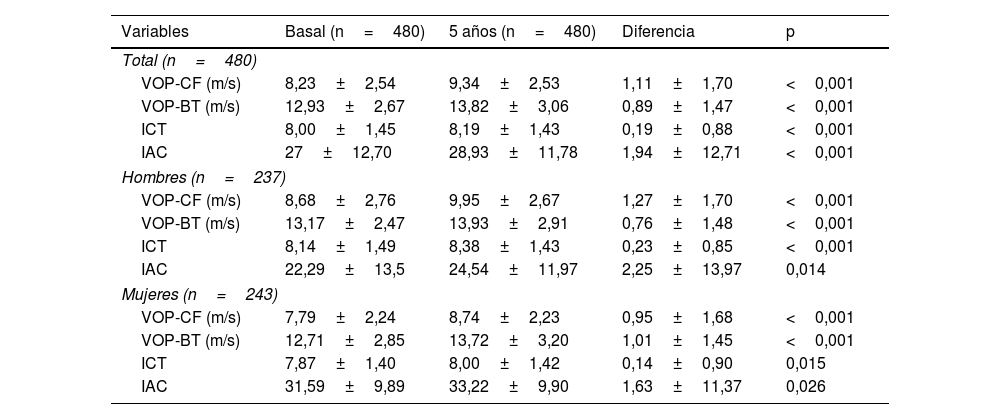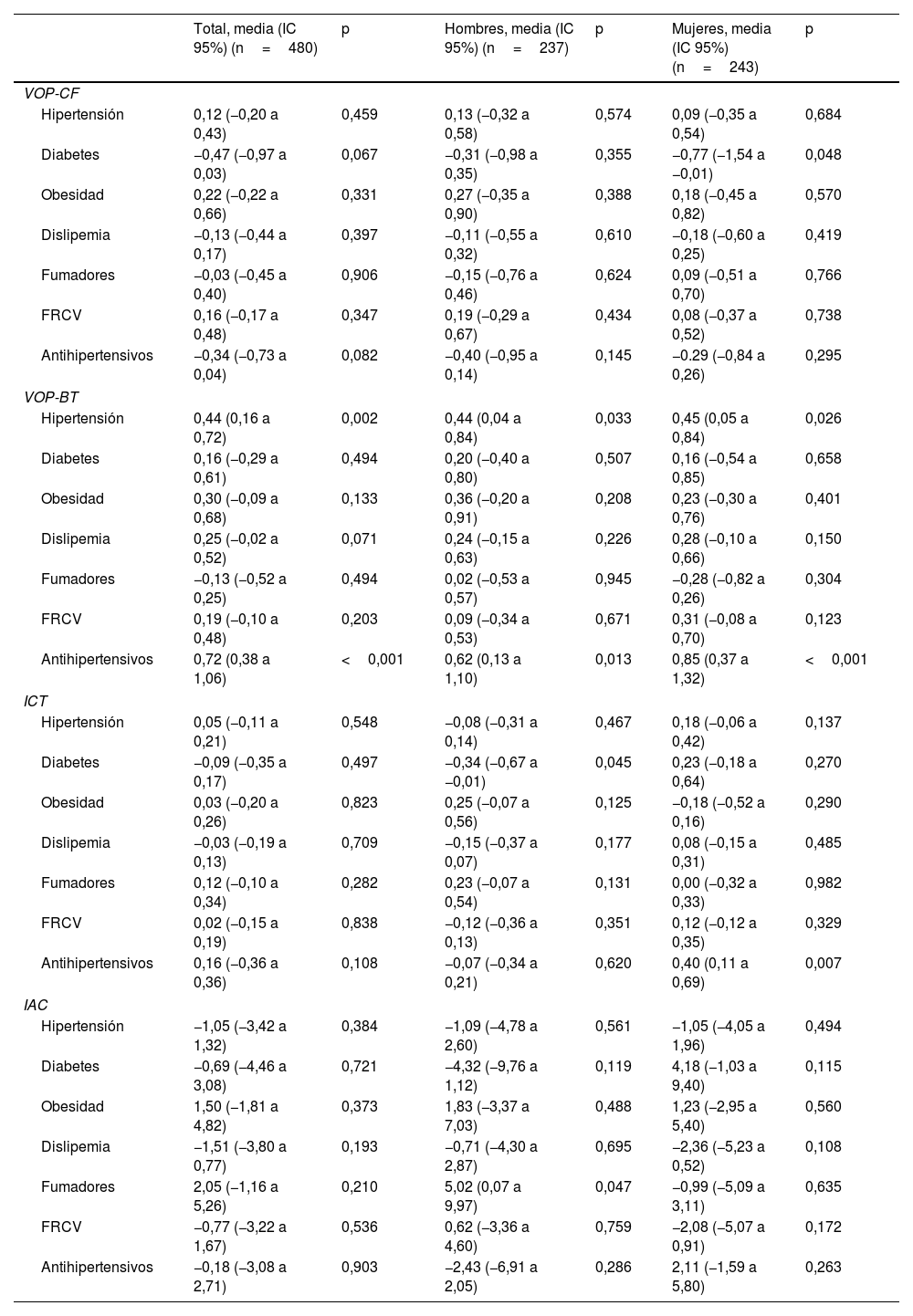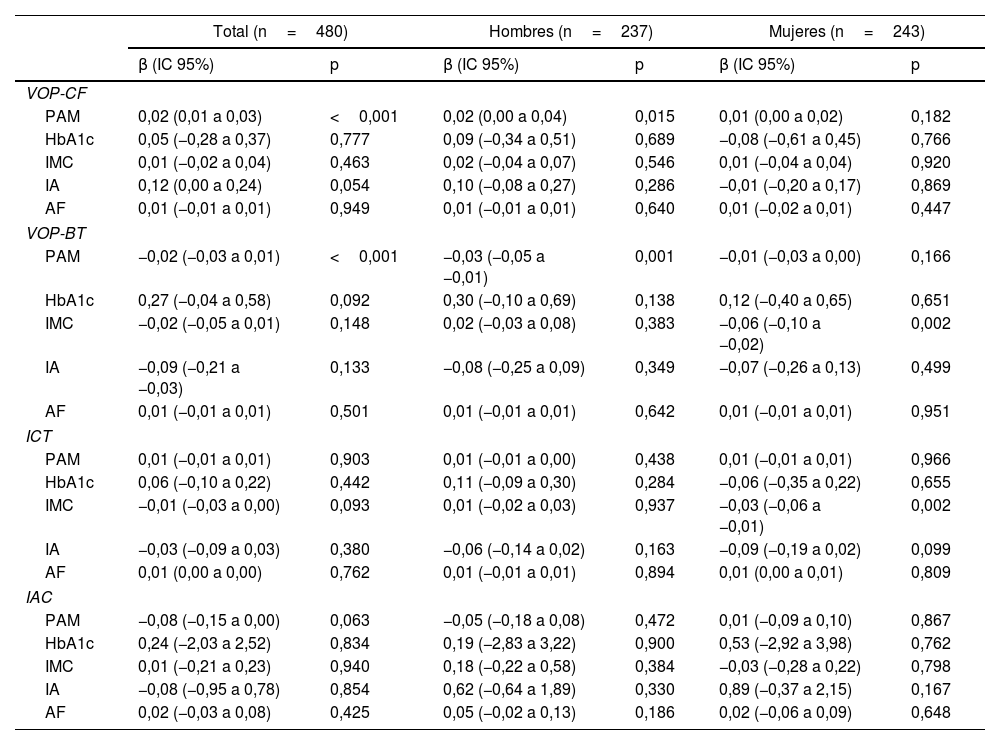Analizar el incremento de la rigidez arterial durante 5 años, su asociación con factores de riesgo cardiovascular y diferencias por sexo en población española sin enfermedad cardiovascular.
MétodosEstudio descriptivo longitudinal. Análisis del incremento de las medidas de rigidez arterial evaluadas con SphygmoCor y Vasera de 480 sujetos seguidos durante 5 años de los 501 sujetos incluidos en la evaluación basal, seleccionados mediante muestreo aleatorio estratificado por edad y sexo.
ResultadosLos incrementos de las medidas de rigidez arterial por año han sido: velocidad de onda de pulso carótida-femoral (VOP-CF), 0,22 (DE 0,36) m/s, velocidad de onda de pulso brazo-tobillo (VOP-BT), 0,18 (DE 0,30) m/s, índice corazón-tobillo (ICT), 0,04 (DE 0,18) e índice de aumento central (IAC), 0,38 (DE 2,66). Los incrementos de VOP-CF y VOP-BT mostraron asociación con presión arterial media en global (β=0,02; β=−0,02), y en hombres (β=0,02; β=−0,03). En mujeres, los incrementos de la VOP-BT y del ICT mostraron asociación negativa con el IMC (β=−0,06; β=−0,03).
ConclusionesLas 4 medidas de rigidez arterial aumentan a lo largo de 5 años en global y por sexos. Dichos incrementos difieren según: medida utilizada, edad, sexo y factores de riesgo cardiovascular asociados. Los hipertensos presentan mayores incrementos de VOP-BT en global y por sexo. La presión arterial media se asocia con incrementos de VOP-CF y VOP-BT en global y en hombres. El IMC se asocia de manera negativa con incrementos de VOP-BT e ICT en mujeres.
Estudio registrado en ClinicalTrials.gov. (NCT02623894).
To analyse the increase of arterial stiffness over a five-year period and its relationship with cardiovascular risk factors and sex-based differences in a Spanish population without cardiovascular disease.
MethodsLongitudinal study. Analysis of the increase in arterial stiffness measures evaluated with SphygmoCor and Vasera of 480 subjects followed for 5 years of the 501 subjects included in the baseline evaluation, selected through random sampling stratified by age and sex, mean age of 55.9 years, 50.3% women.
ResultsIncreases per year: carotid-femoral pulse wave velocity (cf-PWV), 0.22 (SD 0.36) m/sec, brachial-ankle pulse wave velocity (ba-PWV), 0.18 (SD 0.30) m/sec, Cardio-Ankle Vascular Index (CAVI), 0.04 (SD 0.18) and Central Augmentation Index (CAI), 0.38 (SD 2.66). Multiple regression, increases in cf-PWV and ba-PWV showed an association with mean arterial pressure in global (β=0.02; β=−0.02) and in men (β=0.02; β=−0.03). In women, increases in ba-PWV and CAVI showed a negative association with BMI (β=−0.06; β=−-0.03).
ConclusionsThe four measures of arterial stiffness increase over five years globally and by sex. These increases differ according to the measure used, age, sex and associated cardiovascular risk factors. Hypertensive people has greater increases in ba-PWV in global and by sex. The average blood pressure is associated with increases in cf-PWV and ba-PWV in global and in men. BMI is negatively associated with increases in ba-PWV and CAVI in women.
Study registered at ClinicalTrials.gov. (NCT02623894).
Artículo
Comprando el artículo el PDF del mismo podrá ser descargado
Precio 19,34 €
Comprar ahora











